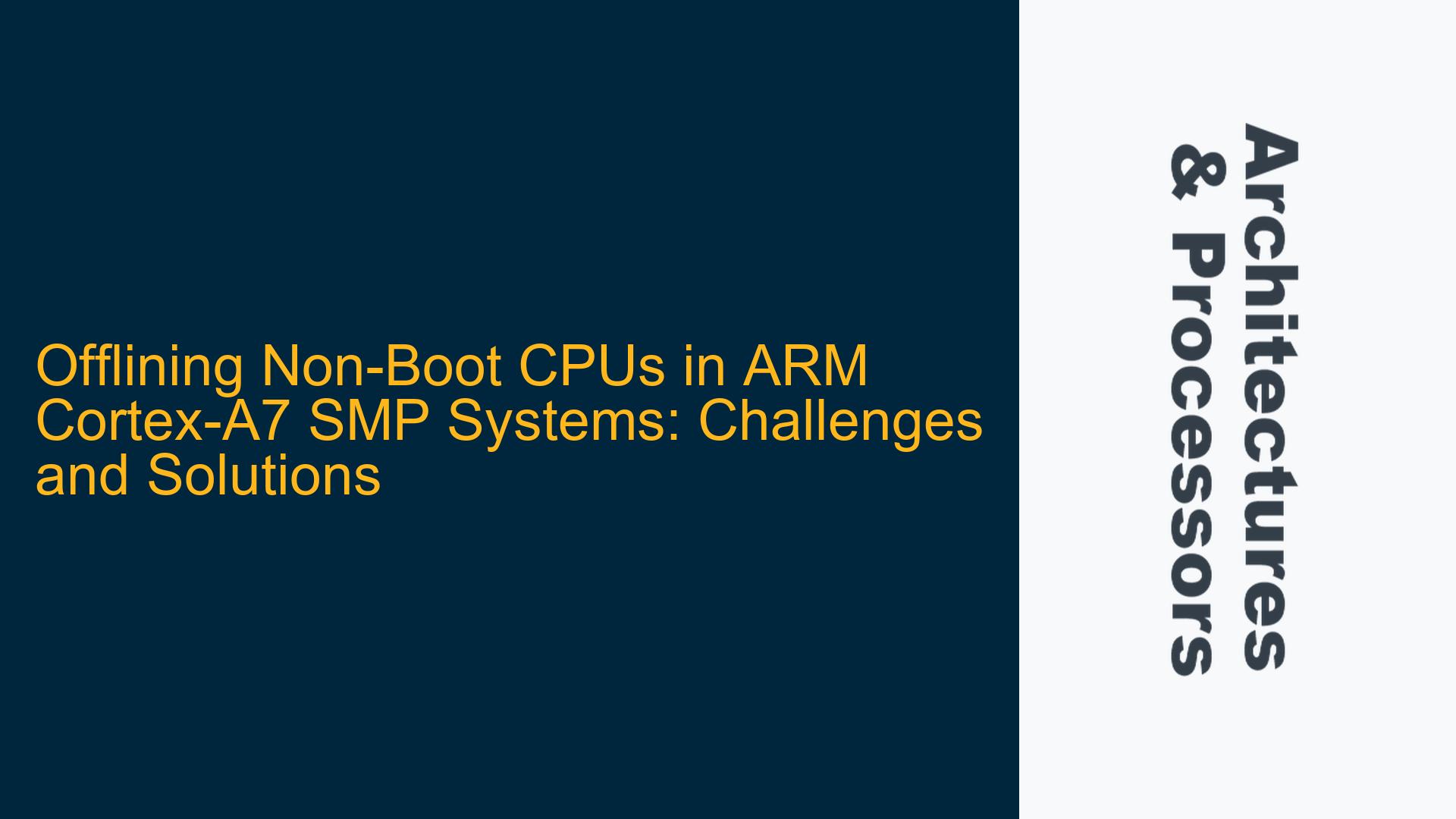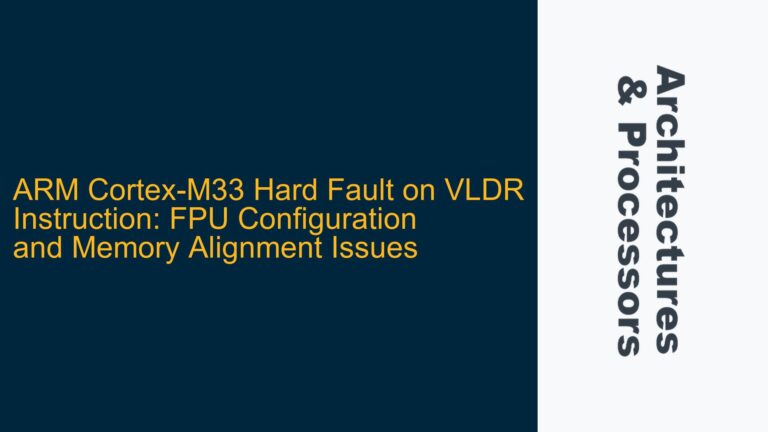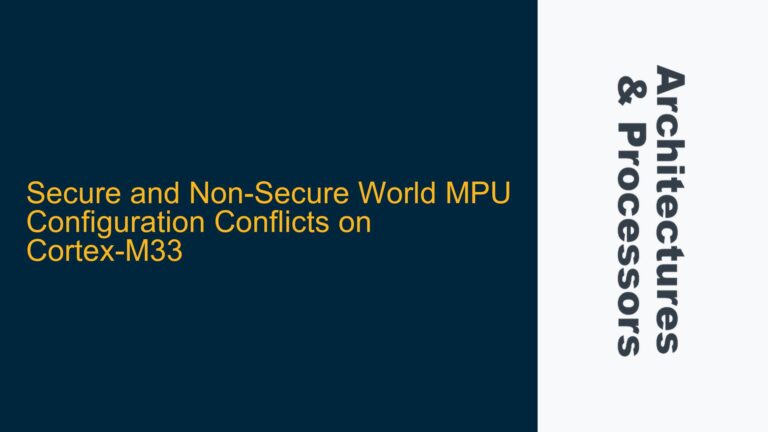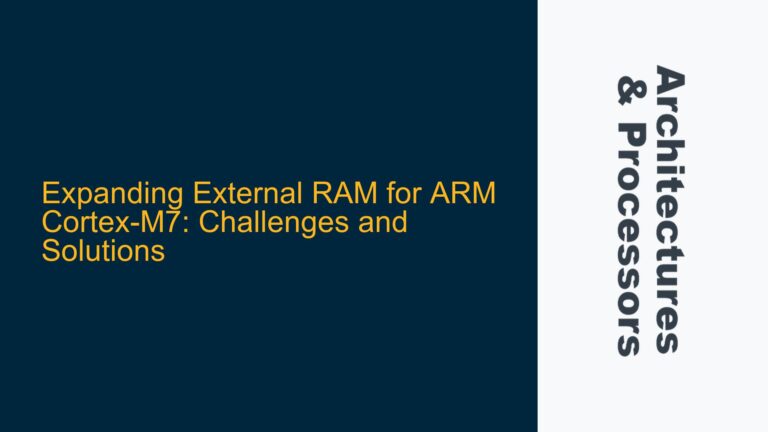ARM Cortex-A7 SMP CPU0 Boot Dependency and Offlining Constraints
In ARM Cortex-A7-based symmetric multiprocessing (SMP) systems running Linux, CPU0 is designated as the boot CPU and is inherently required to remain active throughout the system’s operation. This design choice stems from the architecture’s reliance on CPU0 for critical system tasks, such as interrupt routing, kernel scheduling, and other low-level operations. The Cortex-A7, being a member of the ARMv7-A family, is widely used in embedded systems due to its balance of performance and power efficiency. However, its SMP implementation introduces specific constraints when attempting to offline non-boot CPUs, particularly CPU0.
The inability to offline CPU0 in ARM32-based Linux kernels is rooted in the kernel’s design, which assigns numerous system-critical tasks to CPU0 by default. These tasks include handling platform-specific interrupts, managing power states, and coordinating multi-core operations. While ARM64 kernels have introduced mechanisms to offline CPU0, ARM32 kernels lack this capability due to historical design decisions and the complexity of redistributing these tasks dynamically. This limitation is particularly pronounced in systems where power management is critical, as CPU0 often remains active even when other CPUs are idling or powered down.
The Cortex-A7’s power management features, such as the cpuidle framework, allow individual CPUs to enter low-power states when idle. However, CPU0’s involvement in system-level tasks often prevents it from entering deep sleep states as frequently as other CPUs. This behavior can lead to suboptimal power efficiency, especially in systems where CPU0 is underutilized for application-specific workloads. Understanding these constraints is essential for developers aiming to optimize power consumption and performance in Cortex-A7 SMP systems.
Interrupt Routing and Kernel Task Assignment to CPU0
The primary reason CPU0 cannot be offlined in ARM32-based Linux kernels is its central role in interrupt routing and kernel task management. In SMP systems, interrupts are typically routed to CPU0 by default unless explicitly configured otherwise. This design ensures that critical interrupts, such as those from timers, peripherals, and inter-processor communication mechanisms, are handled reliably. However, it also means that CPU0 must remain active to service these interrupts, even if other CPUs are available to take over.
Additionally, the Linux kernel assigns several system-level tasks to CPU0 during initialization. These tasks include managing the scheduler, handling kernel threads, and coordinating multi-core operations. While some of these tasks can be redistributed to other CPUs, the kernel’s ARM32 implementation does not support dynamic reassignment of these responsibilities. This limitation is particularly evident in systems where CPU0 is underutilized for application-specific workloads, as it remains active to handle background tasks and interrupts.
The Cortex-A7’s architecture exacerbates this issue due to its reliance on CPU0 for low-level operations. For example, the Generic Interrupt Controller (GIC) used in Cortex-A7 systems typically routes interrupts to CPU0 unless explicitly configured to use another CPU. This behavior is deeply ingrained in the kernel’s ARM32 implementation and is not easily modified without significant changes to the kernel’s architecture.
Implementing Dynamic Task Redistribution and CPU0 Offlining
To address the challenges associated with offlining CPU0 in ARM Cortex-A7 SMP systems, developers can explore several strategies, including dynamic task redistribution, interrupt rerouting, and leveraging ARM64 kernel features where applicable. While these solutions may require significant effort, they can improve power efficiency and system performance in scenarios where CPU0 is underutilized.
One approach is to modify the Linux kernel’s ARM32 implementation to support dynamic redistribution of system tasks from CPU0 to other CPUs. This modification would involve identifying and reassigning tasks such as interrupt handling, kernel thread management, and scheduler operations to other CPUs. While this approach is technically feasible, it requires a deep understanding of the kernel’s internals and may introduce stability issues if not implemented correctly.
Another strategy is to reroute interrupts from CPU0 to other CPUs using the GIC’s configuration registers. By reprogramming the GIC to route interrupts to a specific CPU or distribute them across multiple CPUs, developers can reduce CPU0’s workload and allow it to enter low-power states more frequently. However, this approach requires careful consideration of interrupt latency and system responsiveness, as rerouting interrupts may introduce delays in handling critical events.
For systems that can transition to ARM64 kernels, offlining CPU0 becomes more straightforward due to the kernel’s support for dynamic CPU offlining. ARM64 kernels include mechanisms to redistribute tasks from CPU0 to other CPUs, allowing CPU0 to be offlined when not needed. Developers can leverage these features to achieve better power efficiency and performance in Cortex-A7-based systems. However, transitioning to ARM64 may not be feasible for all systems, particularly those with legacy software or hardware constraints.
In conclusion, offlining non-boot CPUs in ARM Cortex-A7 SMP systems presents significant challenges due to CPU0’s central role in interrupt routing and kernel task management. While ARM32-based Linux kernels do not support offlining CPU0, developers can explore strategies such as dynamic task redistribution, interrupt rerouting, and transitioning to ARM64 kernels to address these limitations. By understanding the underlying architecture and kernel design, developers can optimize power consumption and performance in Cortex-A7-based systems.






